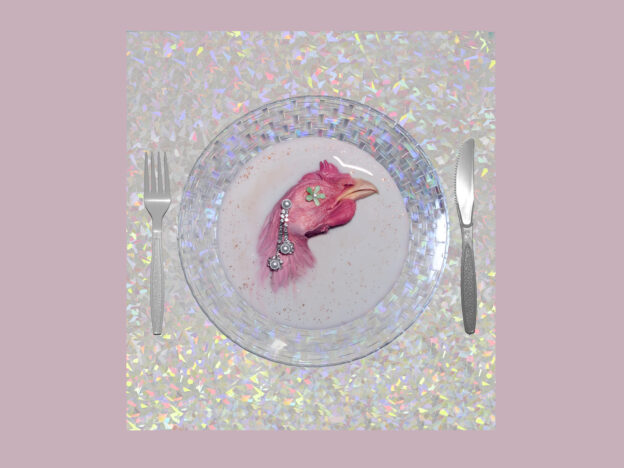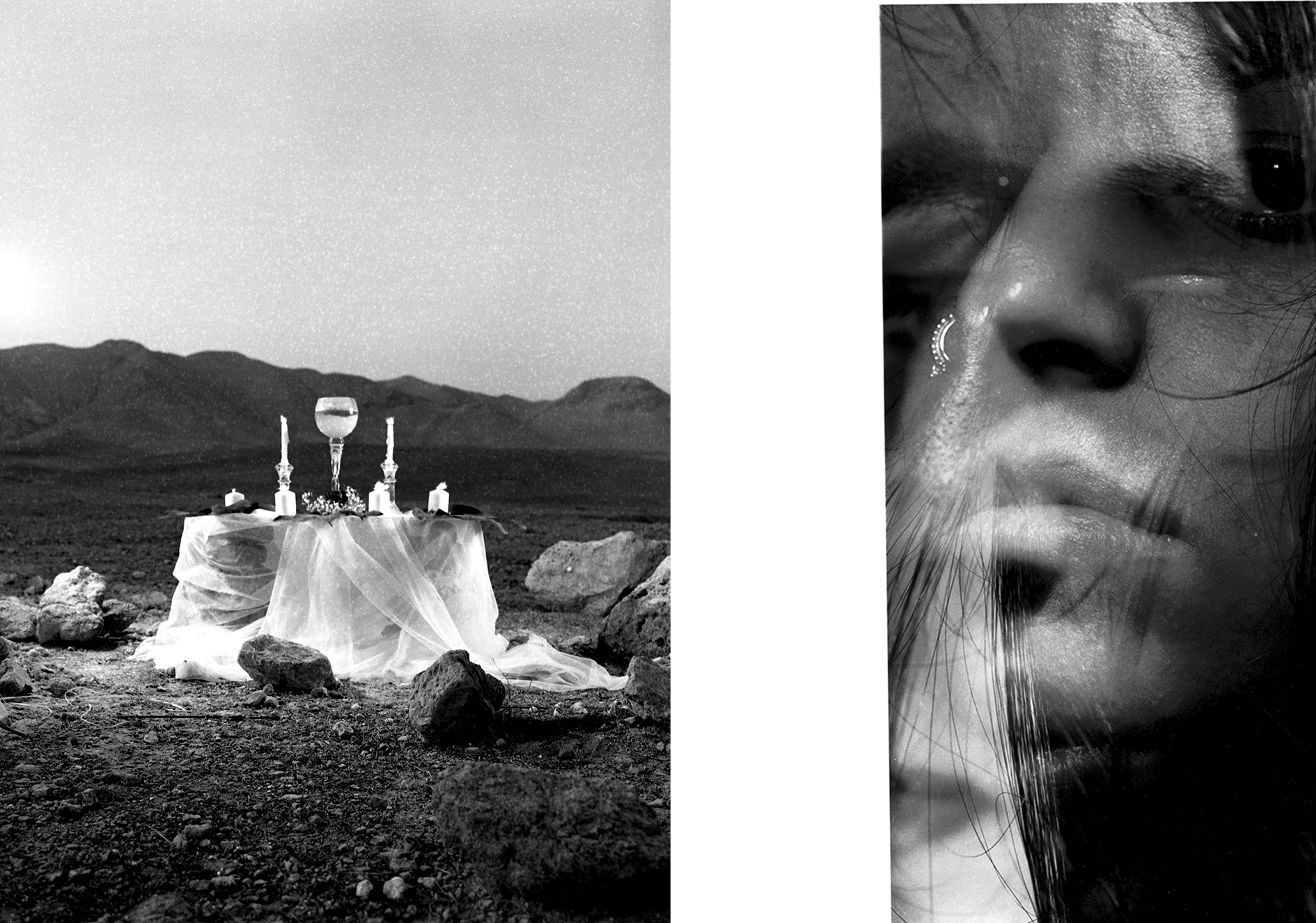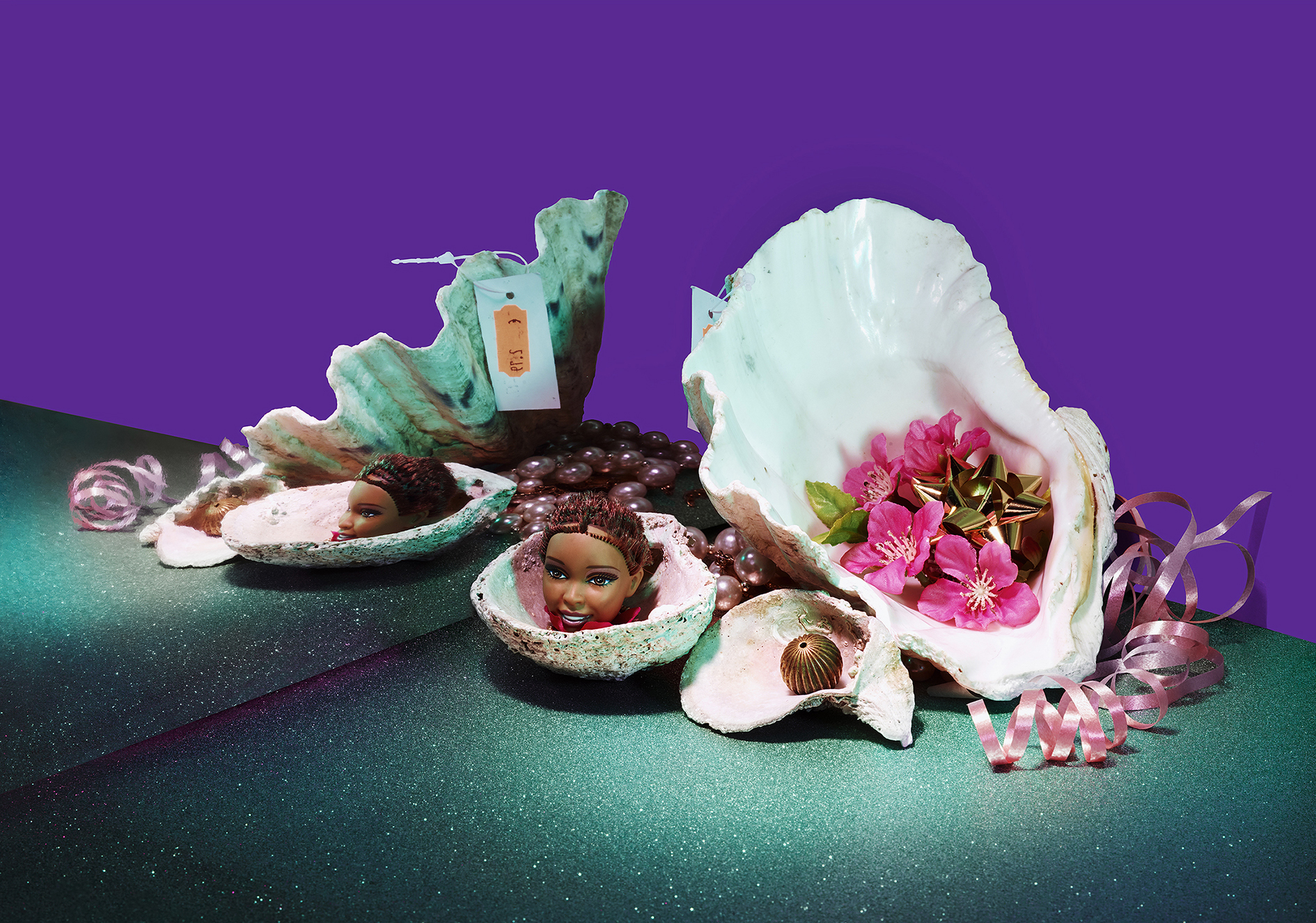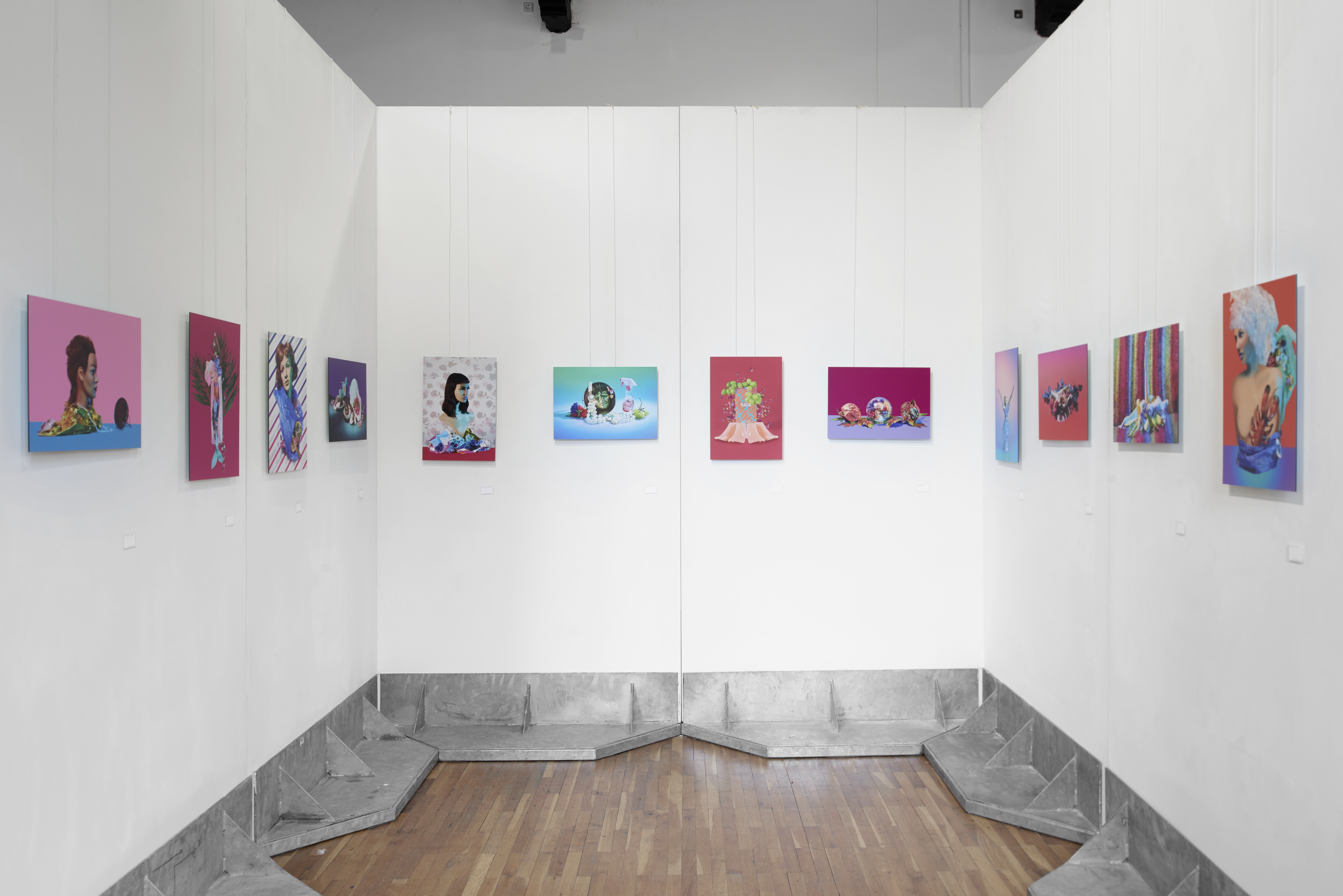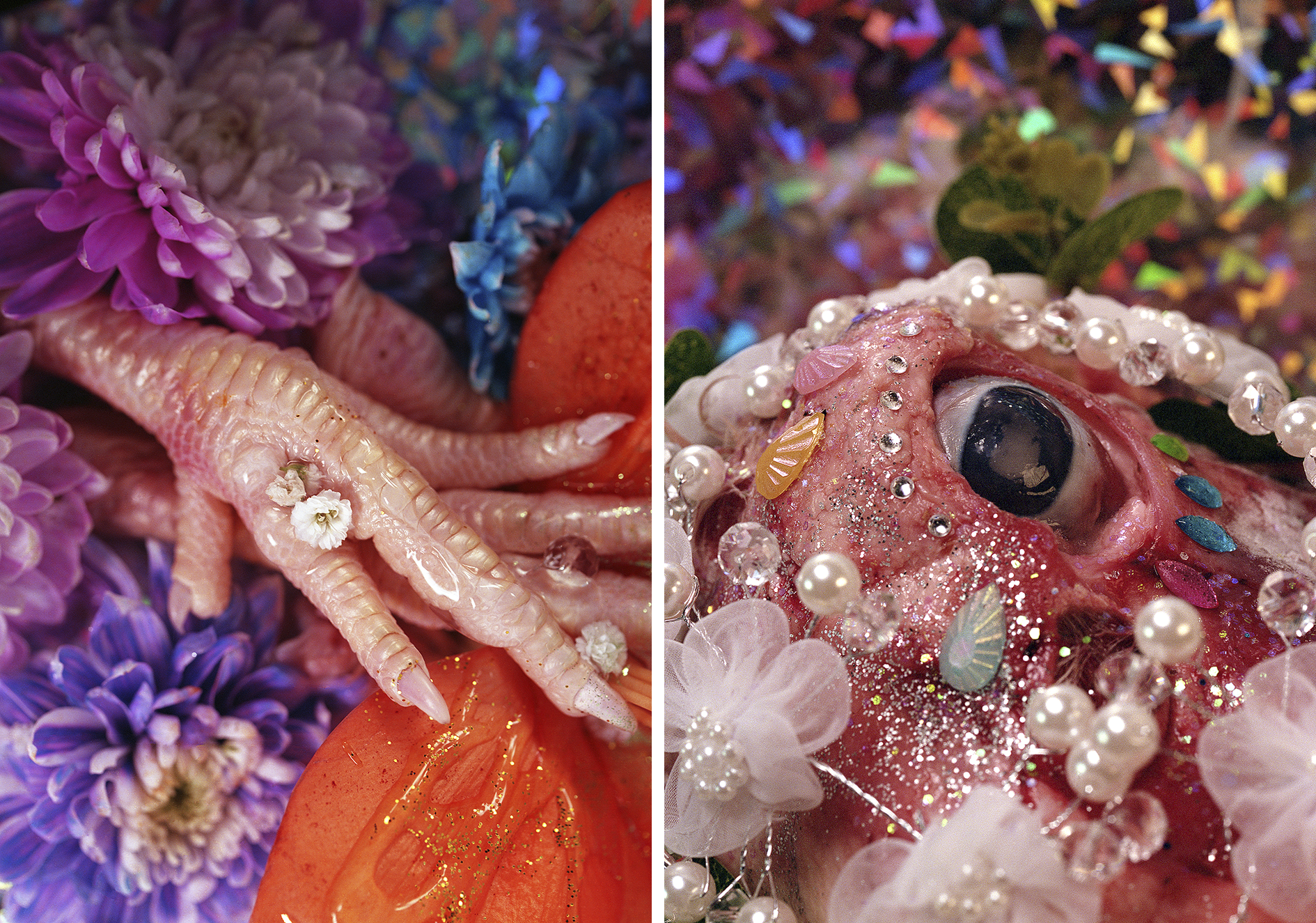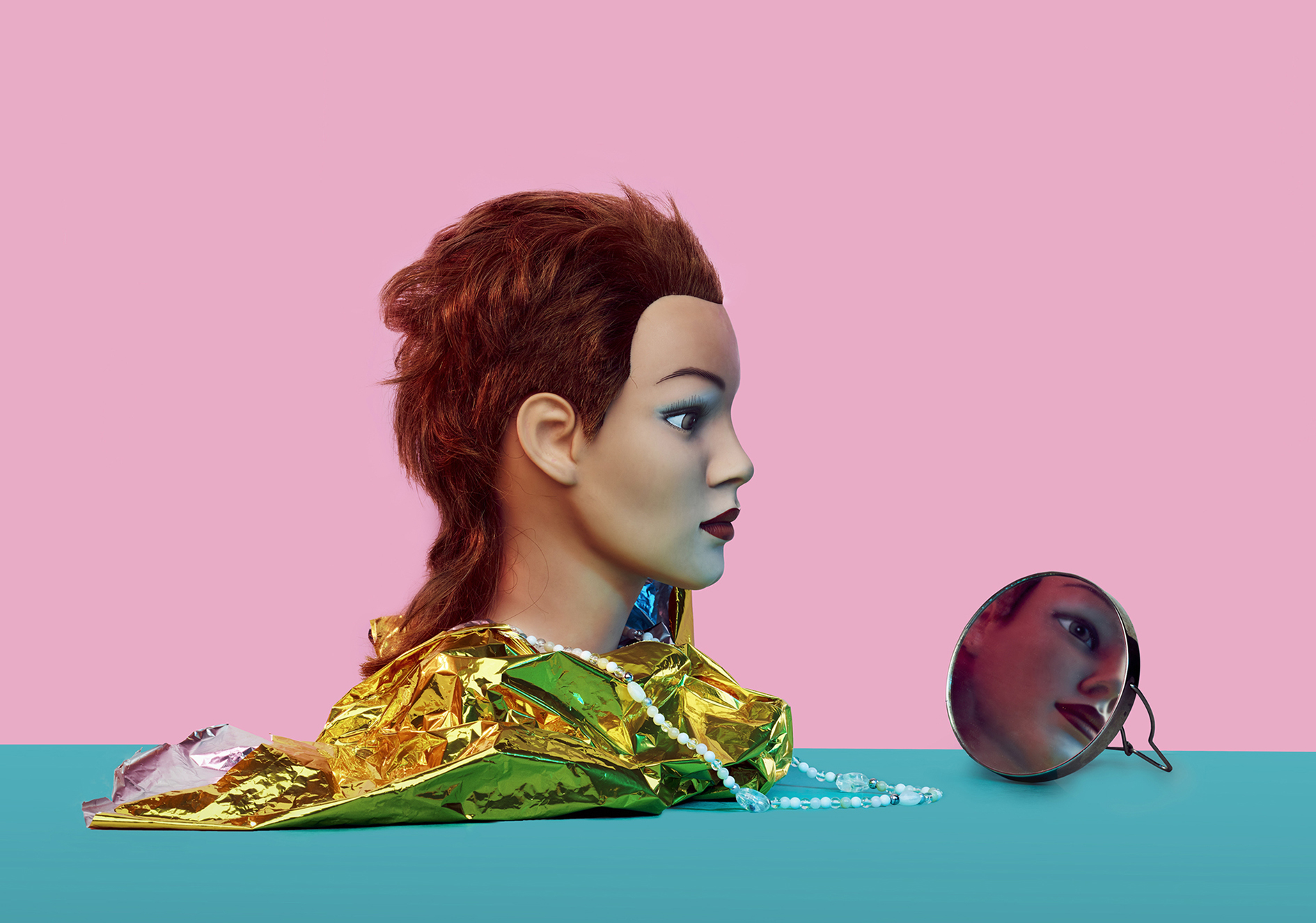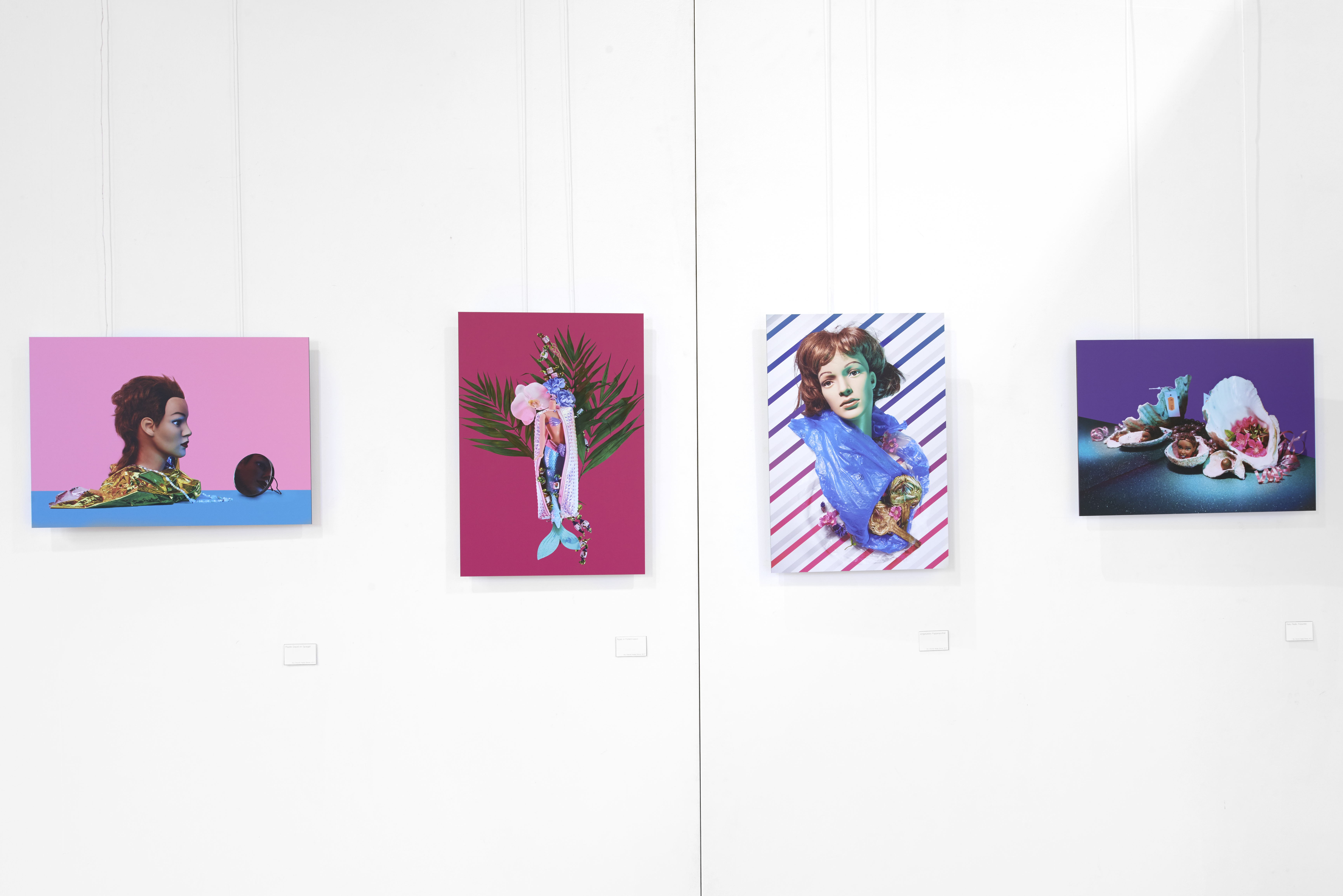Nadja Shkirat has found her identity in a multi-cultural family and has been able to construct her art practice despite a hostile overcritical establishment. With her photography, Nadja visualises her take on controversial topics, such as politics, sexuality, and consumerism.
Nadja Shkirat was born in Eastern Germany and now lives in East Jerusalem. She has a BA in Art Education from the University of Leipzig and did her Masters at Burg Giebichenstein University of Art and Design Halle. Being the daughter of a Palestinian father and an Afghani mother, the young artist has faced a lot of discrimination. Surprisingly, this did not cease while studying. Her artistic attempts were not understood or valued. Nevertheless, Nadja was strongly committed to stand her ground and argue for her photographic vision. Academic boundaries only opened up her professional abilities, unleashing her artistic freedom.
power through artistic freedom
Nadja shoots in analog, but at the same time, a significant part of her art practice is computer-based image processing. This seems to reflect her immediate environment where you can see a child riding a donkey or a flash new mercedes using the same street. Like Nadja’s work, East Jerusalem is a microcosm of the remnants of all previous eras; a functioning combination of incompatibilities.
Nadja uses the language people are surrounded by every day. She combines tradition with bling and questions both. She offers an alternative to the empty visuals that engulf the visual world. Her works put forth her positions on acute issues. Politics, ecology, advertising, and art establishment are significantly disappointing, as well as Baudrillard’s consumer society and humanity’s cracked moral compass. In this critical era, Nadja strives to deliver the importance of art to a general audience.
“If you don’t have art, you don’t have society. Therefore, it’s not about art, it’s always about us.”
Modern reality is fragmented with clips or “stories”. There seems to be an inability to convey anything pure, the indifference of people around, lack of involvement, totalitarian crimes and stereotypes.
Why make art?
To whom can your photography be addressed if the audience is satiated with “mass” culture, poor in meaning and acting as a sedative? Everybody appears to turn to the dehumanized entertainment industry as a panacea, which in fact is poisonous. It degenerates self-education, faith and craving for change, and impressions of true art.
images supplied by the artist. credits as labeled.
Nadja has reached the point where she feels she needs to address controversial topics. For instance, the categories of beauty and ersatz-beauty (modified, surrogate naturalness), sexuality, utopia, perfection are implanted in her clean and vivid images. Nadja discovers the vagaries of our plastic world, the good-looking canons, and surrealistically distorted ethical rules. She can not tolerate people that are not real. She despises artificial fakeness and social media “avatars.” Her “plastic” photo series is thus dedicated to real women forced to become standard models, transformed into mannequins. Nadja insists that any human appearance be accepted and respected.
Another of Nadja’s projects can be looked at as a reflection on the character of colour perception. The colour inversion extrapolated in the sky photographs reveals the specific properties of sensory experience, i.e. qualia. The sense of colour cannot be reduced to the objective diagram of the light waves that a physicist operates with. Clouds are nature’s poetry, and the most democratic of its displays since everyone can have a fantastic view of them. By converting the clouds into dark tones and the sky into a pink spectrum, the artist shares the distinctiveness of her perception.
Nadja’s mission
Nadja also combines her artistic practice with the role of an educator. Teaching photography allows her to see its infinite possibilities. Photography is the perfect platform to visualise what is in one’s head. It is self-sufficient; requiring no further explanation. In addition to other students, Nadja passionately teaches photo skills to Palestinian children. She interprets it as her artist’s social responsibility and feels it can make a real impact. Nadja emphasizes the hope that photography can give and how it helps people share their realities and feelings.
Nadja’s art is an ongoing enterprise. There is always a new thought coming. There is always something else that she can create, add, or revise. For example, she is continuously reconsidering the castration anxiety in her “Vagina Dentata“ project. Vagina dentata (Latin for “toothy vagina”) is a mythological part of the female body, a vagina with teeth, capable of cutting off the male genitalia during intercourse.
The concepts of religion and mentality are intriguing for Nadja as well, and in her upcoming projects she is planning to reflect on these topics more. Apart from that, hair as a substance, metaphor, and cultural item is also fascinating to the artist. She is looking forward to exploring wigs, body hair, female hair, and associated customs.
written by Andrii Myroshnychenko
Nadja Shkirat participated in PKORP #2 our online residency program. You can learn more about her artistic practice on the web site and Instagram page.

